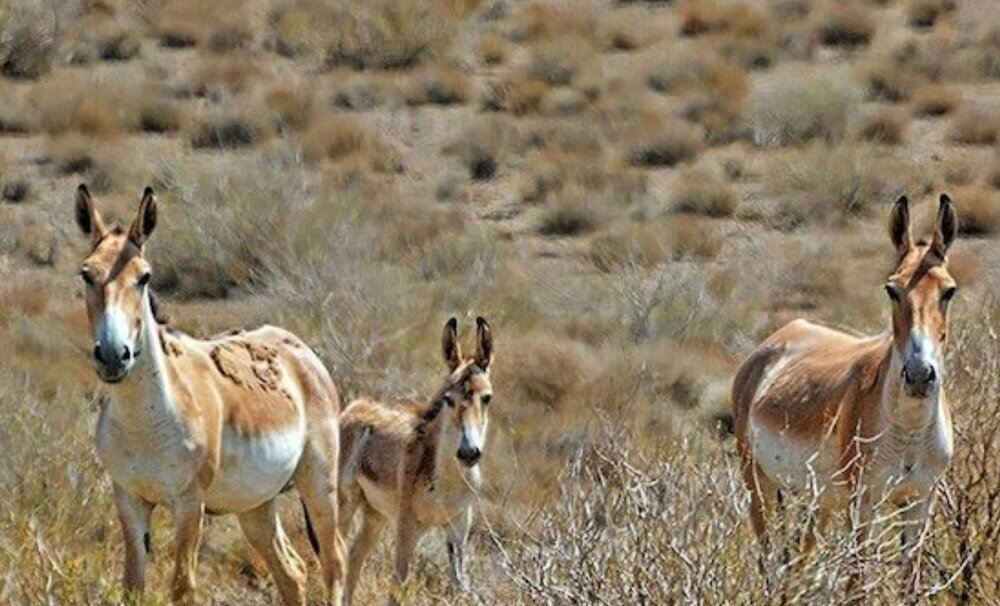A glimpse at wonderful wildlife refuges in Semnan

TEHRAN – North-central Semnan province is home to two extraordinary arrays of wildlife and natural landscapes, from Touran to Kavir National Parks, areas with the largest population of endangered Asiatic cheetah. Here, we take a glimpse at these wild, wonderful places.
To preserve the existing biodiversity over the wide geographic expanse of Iran, four types of areas have been designated for preservation and protection, including, national parks, wildlife refuges, protected areas, and natural national monuments. In 1997, the Department of the Environment (DOE) held supervision over 7,563,983 hectares of such areas. By the year 2003, the size of the DOE-supervised areas reached 11,791,788.225 hectares.
The national park is a designated part of Iran’s environment - including forests, rangelands, woodlands, prairies, water, and mountains - that is an outstanding representation of Iranian nature. As such, it is brought under protection in order to permanently preserve its natural ecology and to create a suitable environment for the flourishing of wildlife and the growth of flora under natural conditions. The national parks currently cover 1,649,771 hectares of the country’s area.
Protected areas also are significantly important natural resources due to their impact on wildlife breeding, the preservation of plant life, or its natural state. The total area of regions protected is 6,600,601 hectares.
A Wildlife refuge has natural habitats and special climate qualifications, which are brought under protection in order to revive wild animals, and it stretches to 3,524,181 hectares.
Khar Turan National Park
Khar Turan National Park or Touran Wildlife Refuge, situated in the southeast of Shahrud city, stretches to 1,400,000 hectares while being the second largest reserve in the country after Naybandan Wildlife Refuge.
Defined as a protected area in 1972, the region also received the title of biosphere reserve by UNESCO and ranked the second biosphere in the world after the Serengeti ecosystem (a geographical region in Africa).
A wide range of flora and fauna, and valuable genetic resources are seen in the area, more importantly, the precious species of Asiatic cheetah inhabit the area.
National Parks, Wildlife Refuges, and Protected Areas constitute 8, 17, and 75 percent of the entire area. Ghosts have been nicknamed Iran's Africa.
Some 41 species of mammals, 167 bird species, 42 reptile species, and 2 amphibian species have been identified in Touran.
The reserve also hosts wild sheep and goats, the goitered gazelle and Indian gazelle, in addition to the largest population of Persian onager.
The most important animal species are leopard, cheetah, jebeer gazelle, goitred gazelle, wild goat, Northern three-toed jerboa, hamster, gerbil, hyrna, wildcat, cape hare, marbled, polecat, caracal, houbara bustard, Pleske’s ground jay, heron, ferruginous duck, eagle, falcon, peregrine falcon, sand grouse, see-see partridge, different buzzards, goshawk, eagle owl, agama, monitor, Iranian spiny-tailed lizard, saw-scaled viper, and cobra.
The high biodiversity of the region has paved the way for scientific, educational, and research activities in the refuge.
Kavir National Park
Kavir National Park with an area of 4,000 square kilometers is a protected ecological zone stretched over the provinces of Semnan, Tehran, Qom, and Isfahan.
Lying on the western edge of Iran’s major desert (Dasht-e Kavir), the region reveals the natural beauty of the mysterious desert and displays a great share of wildlife species. Its astonishing biological characteristic has made it known as Little Africa or Iran’s Serengeti.
Kavir National Park is home to native goats (Capra aegagrus), sheep (Ovis Orientalis), striped hyenas, Indian wolves, gazelles, rare Asiatic cheetahs, and Persian leopards.
Receiving around 150 millimeters of rain a year, the region’s vegetation is adapted to drought and salty soils; also plants grow leaves with thorns to retain water and combat grazing by animals.
The Kavir National Park is Iran’s only region that contains no human, mineral, and grazing habitat so it is well protected from human involvement.
In fact, the park is a natural exhibition for showcasing the rare desert wildlife, including Asiatic cheetah, Persian leopard, gray wolf, striped hyena, sand cat, red fox, Rüppell's fox, chinkara, ovis, jackal, caracal, and various halophyte plants.
In total, 34 species of mammal, 155 birds, and 34 reptiles have been identified in this region.
In the past, a large population of Persian onager lived in the area, the last of which was observed in 1984, and today their generations have certainly vanished.
Black-tailed gazelle, if not extinct, is on the verge of extinction, but the population of Indian gazelle in this region is probably the largest in all of Iran.
Leave a Comment